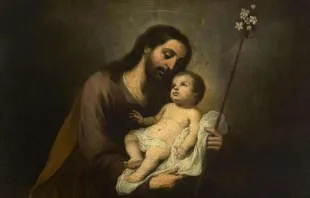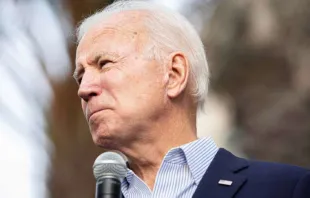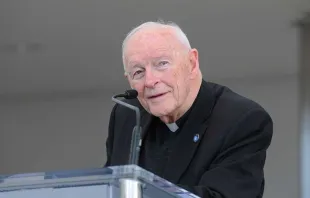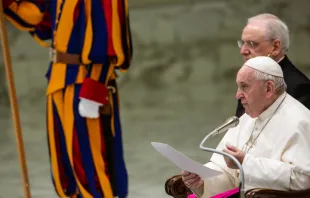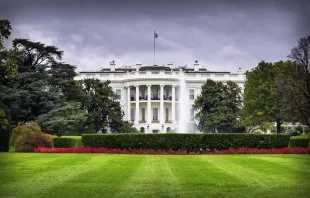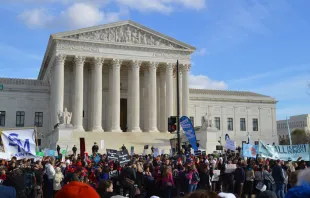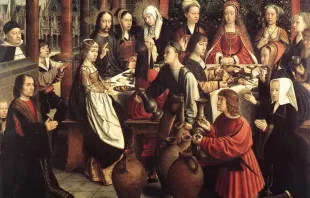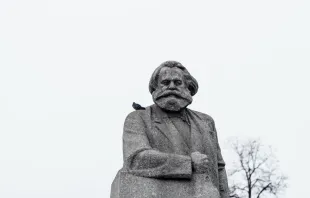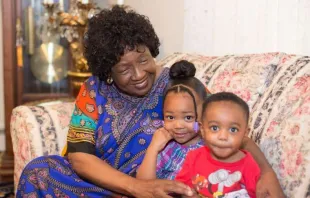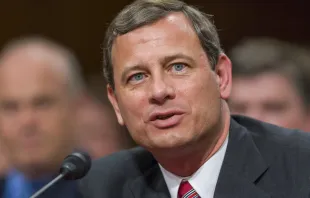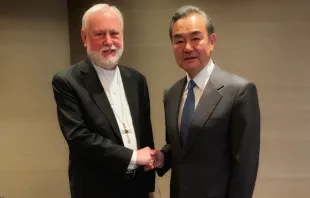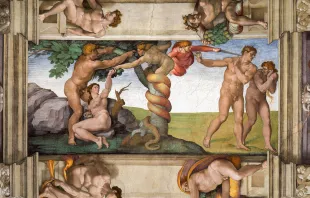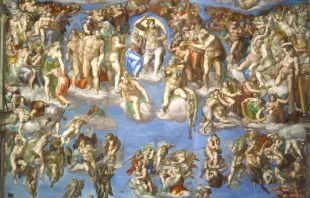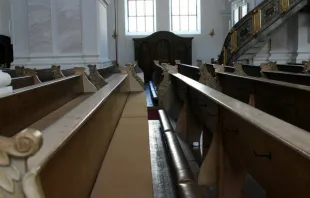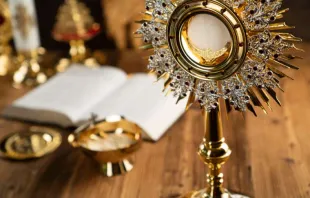Articles by Russell Shaw
St Joseph and the Fatherhood Crisis
Jan 28, 2021 / 00:00 amLaunched in December with modest fanfare, the Church’s observance of 2021 as a year to honor the fatherhood of St. Joseph seems to have dropped largely out of sight. True, a plenary indulgence (under the usual conditions) is available to those who practice a devotion to St. Joseph on Wednesdays during the year, but otherwise not much seems to be happening.
Biden and National Unity
Jan 15, 2021 / 00:00 amWith searing images of mob violence at the U.S. Capitol fresh in memory, Joe Biden comes to the presidency as a potential healer of divisions and binder up of wounds. Yet his own prior commitments could prevent him from succeeding in those roles.
Saving Catholic Schools
Dec 3, 2020 / 00:00 amA little over two centuries ago – in 1810, to be precise – a brave, devout woman named Elizabeth Ann Seton launched two tiny schools, an academy and a free school. The site was a former farmhouse in rural Maryland that also housed the first members of her newly founded American branch of the Daughters of Charity. Virtually unnoticed at the time, that event is now regarded as the start of the parochial school system in the United States. But celebrations of this 210th anniversary, if any there be, can only be muted, not to say filled with anxiety. For the once mighty Catholic school system is now in a state of decline, with no end in sight. The start of this pandemic-ridden school year was further darkened by the news that some 150 Catholic schools across the country had closed for good. Such closings are hardly new – Catholic schools have been closing for years – but this number of closings was substantially higher than usual and a troubling sign of what may lie ahead. As to that, consider these numbers (the source is CARA – the Center for Applied Research in the Apostolate). In 1970, there were more than 9,000 Catholic elementary schools in the U.S. enrolling some 3.4 million students; last year there were just over 5,000 schools with 1.2 million students. The picture is the same at the secondary level: in 1970, nearly 2,000 schools with over a million students, compared with 1,200 schools and 556,000 students last year. For a long time, the Catholic school system has been the most impressive institutional achievement of American Catholicism. And now? The loss of schools and students reflected in these numbers is tragic in many respects, but especially for the weakening they imply of the Church’s ability to transmit the faith from one generation to the next. Reading that, of course, some people no doubt will say: Not to worry. After all, non-school religious education takes up the slack, doesn’t not? With all due respect to the dedicated volunteers who serve as religious education teachers in thousands of parishes, there are two problems with that particular response. First, it’s hard to imagine that an hour of religious instruction on Sunday morning is, on the whole, as effective a means for transmitting religious faith and values as a fulltime, five-day-a-week school staffed by committed teachers. That aside, moreover, there’s the discouraging fact that the numbers for non-school religious education itself are equally as bad as the numbers for schools. Here are some more CARA figures: 4.3 million primary school-age children and 1.3 million secondary school-age children in parish religious education in 1970, as against 2.2 million primary school children and 527,000 secondary school children in 2019. Many factors have combined to produce the present situation. They include a declining birth rate and, in the case of schools, rising costs or, in many places, simply the lack of a Catholic school. Face it, too, part of the blame rests with weakened commitment to the faith among nominally Catholic parents who could afford to send their children to Catholic schools but see no particular reason either to do that, or to send the kids to religious education, or to provide serious religious formation at home. There are no easy answers here, but for starters let’s set aside the prevailing laissez-faire acceptance of the decline and disappearance of Catholic schools and launch a serious effort at the national level to explore possible responses. Meanwhile: St. Elizabeth Seton, pray for us and the children.
After the McCarrick Report
Nov 19, 2020 / 00:00 amThe Vatican document tracing the rise of ex-cardinal Theodore McCarrick through the hierarchy’s ranks has been praised for its unprecedented transparency in shedding light on a dark episode in the life of the Church. But the practice of transparency shouldn’t stop there. The McCarrick report, coming after the fact, gives us an eye-opening picture of misjudgment and bungling at the upper levels of Church officialdom that enabled a man to ascend far up the ecclesiastical ladder despite continuing rumors of sexual misconduct on his part. So far, so good. But more is needed – specifically, a meaningful degree of proactive transparency regarding the process by which bishops continue to be appointed and promoted. This a necessary step to prevent mistakes like the McCarrick disaster from happening again, or at least make them less likely. It hardly needs saying, of course, that even to suggest such a thing touches a sensitive nerve among Church officials accustomed to keeping the selection and promotion of bishops strictly to themselves. In the Church as elsewhere, this is the typical mistake of imagining secrecy bolsters authority rather than – as is often the case – leading in time to its diminishment and rejection. And is what I suggest really all that crazy? Consider that the Holy See lately renewed its controversial agreement with the communist government of China under which the government nominates candidates for the episcopacy. If the Vatican has no problem allowing Chinese communists to have a central role in choosing bishops, what rational objection could it possibly have to letting faithful Catholics merely observe the process? I am not proposing direct popular election of bishops, which would be a mistake in several ways. I only suggest that the clergy and people of a diocese have a role in proposing and vetting candidates as a routine part of the selection process. Besides helping to head off mistakes, doing so would encourage the emergence of supporting testimony on behalf of worthy individuals. As matters stand, the secrecy of the current process of bishop selection is an undesirable carryover from an earlier era. Now, by contrast, there is ample support in authoritative Church documents for adopting a reasonable degree of openness in this important matter. For example, here is what Lumen Gentium, the Second Vatican Council’s dogmatic constitution on the Church, says in speaking of the Catholic laity: “To [the pastors of the Church] the laity should disclose their needs and desires with that liberty and confidence which befits children of God and brothers of Christ. By reason of the knowledge, competence or preeminence which they have, the laity are empowered – indeed sometimes obliged – to manifest their opinion on those things which pertain to the good of the Church. If the occasion should arise, this should be done through the institutions established by the Church for that purpose.” Or, more recently, here is the words of the former Pontifical Council for Social Communications, in a document called Ethics in Communications which it published in 2000: “A two-way flow of information and views between pastors and faithful, freedom of expression sensitive to the well-being of the community and to the role of the Magisterium…and responsible public opinion all are important expressions of ‘the fundamental right of dialogue and information within the Church.’” Other documents could be cited, but the point should be clear. It’s time to act on the principles these documents endorse by initiating a prudent and responsible opening up of the process of choosing bishops through the practice of proactive transparency.
Legalism and Civil Unions
Nov 5, 2020 / 00:00 amIf you were wondering what became of moral legalism, wonder no more – legalistic thinking has found its home in the media. Coverage and commentary regarding Pope Francis’s recent remarks about civil unions for homosexuals abounded in it, making it sound as if Catholic moral doctrine were a product of papal decree. Legalism is the erroneous view that moral norms are rules – a legal code of do’s and don’ts forever subject to change by a ruler-maker. This makes it a handy device for dismissing norms one doesn’t like – the “rule” against contraception, for instance, or the “law” forbidding remarriage after divorce. Authentic norms like these are not rules, however, but statements of moral truth. Which brings us to the hubbub that greeted the Pope’s remark. For anyone who may have missed it, a new documentary film about Francis quotes him as favoring legally recognized civil unions as a way to give legal shelter to same-sex couples. The Pope said this: “What we have to create is a civil union law. That way they are legally covered.” Leave aside whether civil unions for homosexuals are or aren’t a good idea. A strong case can be made on both sides of that argument. In the United States, however, the question itself is beside the point, since the Supreme Court, in a moralistic exercise of judicial legislating five years ago, went beyond civil unions and imposed same-sex marriage – something the Pope has repeatedly opposed – on the entire country. But that’s history. My subject now is the way the Pope’s off-the-cuff endorsement of civil unions was taken by some as heralding a change in doctrine – the assumption being that Church doctrine on homosexuality can be changed by papal fiat, very much as the Supreme Court in its 5-4 decision made same-sex marriage the law of the land. . A few examples will serve to illustrate this misunderstanding. In her initial report from Rome, National Public Radio’s correspondent skipped the what-ifs and jumped with both feet into the assertion that what Francis had said was “a break from Church doctrine.” New York magazine, noting the not uncommon view of civil unions as a “way station” to same-sex marriage, said “time will tell” whether the Pope was in fact “in the process of changing Catholic doctrine.” And a Washington Post editorial, indulging in an odd verbal straddle, speculated on whether the Pope’s latest remarks would “lead to a change in the church’s doctrinal policy.” Note that word “policy.” To equate the Church’s doctrine with policy is classic legalism. After all, policies are set, amended, and sometimes abolished by decision-makers acting according to their best lights. Whereas the Church holds that in authoritatively teaching moral doctrine – whether on homosexuality or anything else – it isn’t merely setting policy but stating moral truth. The bottom line is that moral norms aren’t established by decree, much less – as in this case – by edited papal remarks in a movie. Norms are products of theological reflection carried on in the light of Revelation. The process, as St. John Henry Newman famously said, is “development,” not change. So what does the Church teach about homosexuality? For answer, turn to the Catechism of the Catholic Church. While saying homosexuals should be treated with “respect, compassion, and sensitivity,” the catechism declares that homosexual acts are gravely wrong and “under no circumstances can they be approved” (CCC 2357). And civil unions? About them, the catechism is silent, leaving this as a policy question on which people who accept the doctrine can disagree.
How Not To Elect a President
Oct 22, 2020 / 00:00 amLet me begin with what I suspect will be a welcome promise – I won’t tell you which candidate to vote for or how I plan to vote. As to the first, by this point in the campaign I suspect that you’ve made your choice. As to the second, I also suspect you don’t really care very much how I cast my ballot. With that out of the way, then, permit me to share a few observations, based on recent and current experience, on the process by which we Americans go about choosing presidents. The first observation is that many voters this year apparently will not so much vote for one candidate as vote against the other. (Needless to say, this cuts both ways.) There’s nothing especially new or wrong about that, but it does suggest why this year’s campaign has been an exceptionally ugly and divisive affair. And that points to an obvious conclusion. Nearly the first post-election item of business for the winner, whether it’s Trump or Biden, should be to take serious steps – beyond the usual rhetoric, that is – to repair our fractured national unity. One way of doing that would be to forgo dividing up the spoils by handing out plum jobs exclusively to supporters and reach out instead to the losers in filling positions and planning a legislative agenda. No, I don’t say that will happen – I’m not that dumb. I merely say it ought to happen, which unfortunately is something very different. A second observation is that, instead of gearing up immediately for the next election cycle, both parties should pause and look seriously at reforming the process. One area needing close attention is the primary system. No doubt primaries serve some useful purposes, and realistically speaking we’re stuck with them anyway, but steps should be taken to fashion a shortened primary season with fewer candidates and, even more important, a new structure that give seasoned party leaders (not big donors but professional politicians) a serious say in choosing their parties’ candidates. My third observation is that this year’s election has been a particularly painful reminder that, as I and others have often said, neither major party in its present form offers a congenial home to people, Catholics and others, who are both seriously prolife and seriously committed to the values embodied in the social doctrine of the Catholic Church. To the best of my knowledge, there is one party like that – the American Solidarity Party, it’s called – but, admirable as its policy positions are, it’s barely a speck on a political landscape dominated by the Democrats and the GOP. Former President George W. Bush seemed to be trying to create something along these lines early in his first term. But then came 9/11 and the debilitating distraction of the wars in Afghanistan and Iraq, and that was the end of that. Sen. Marco Rubio (R-FL) appeared to be pointing to something of the kind last year in his widely noted “common-good capitalism” speech at the Catholic University of America. But the concept remains far from becoming a reality. Here’s hoping Rubio or somebody else picks up this particular ball and runs with it before 2024 rolls around. Are ideas like these pipe dreams, with the parties and the prospective candidates instead locked into a replay four years from now? Perhaps so. But if the campaign of 2020 has demonstrated nothing else, it has at least shown that our present way of choosing presidents is broken and badly needs fixing.
The Court Confirmation Ordeal
Oct 8, 2020 / 00:00 amWhen did confirming someone for a seat on the Supreme Court become a traumatic ordeal for the candidate and the nation? How did we get to the point where a nominee’s intelligence, character, and experience no longer suffice? Once again, these questions have forced themselves on the country’s attention in the confirmation process of Judge Amy Coney Barrett for the opening created by the death of Justice Ruth Bader Ginsburg. Now, too, the novel coronavirus has added further uncertainty to the process, with several senators developing Covid-19. But the problematic nature of Supreme Court confirmation was a reality long before the virus came along. It’s usually said that the bad times began in 1987 with President Ronald Reagan’s nomination of Robert Bork. Bork, a conservative legal scholar and federal judge, former U.S. Solicitor General, and former Acting Attorney General, was greeted with a ferocious mix of loathing and alarm by Senate liberals who determined to go all-out to defeat him. Out front in the anti-Bork charge was Sen. Edward Kennedy (D-MA), who famously said on the Senate floor that Bork’s America was, among other things, a place where “women would be forced into back-alley abortions” and “blacks would sit at segregated lunch counters.” Bork, a reserved man who later converted to Catholicism, said simply, “There was not a line of that speech that was accurate.” The Senate Judiciary Committee, chaired at the time by Sen. Joseph Biden (D-DE), sent Bork’s nomination to the full Senate with the recommendation that it be defeated, and the Senate obliged, voting 58-42 to reject Bork. Now the unhappy consequences of that disgraceful episode are visible again in the case of Judge Barrett. And here it’s become apparent that the real start of the confirmation problem came earlier and lies even deeper than the Bork affair. To be precise, the origin of this ongoing stain on the confirmation process and much else in our national life was the Supreme Court’s January 22, 1973 Roe v. Wade decision legalizing abortion. Roe did many things, most of them bad. In the present context, it can rightly be seen as having placed a question that does not admit of any compromise at the center of an ongoing, notably rancorous national debate. What question is that? Just this: Is it right or is it wrong deliberately to take the life of a nascent human being? A seven-member majority in Roe v. Wade unaccountably said it was right, in the process shouldering aside legal precedent and practicing what Justice Byron White, who with Justice William Rehnquist was one of the two dissenters, called “an exercise of raw judicial power.” Millions of Americans then and since have rightly rejected – and today continue to reject – the ill-considered embrace of abortion by those seven justices. It would be a mistake, too, to blame the present situation on the recalcitrance of prolifers. On the other side of this debate, pro-choice people have turned acceptance of Roe into a litmus test of loyalty to their cherished ideal of moral libertarianism, a vision summed up and celebrated in the magical word “choice” that has come to be applied to other issues besides abortion in our never-ending culture war. Here’s hoping Judge Barrett, an eminently qualified jurist, makes it onto the Supreme Court, despite efforts to apply an illegitimate religious test to her nomination. And here’s hoping, too, that before much longer that court will acknowledge the destructive folly of Roe and take responsible steps to repair the damage it has done.
Of Miracles, Fast and Slow
Sep 24, 2020 / 00:00 amA friend asks me to write about miracles, taking as an example the events that brought him and his wife together in a happy marriage now in its 58th year. To his credit, he doesn’t suggest their case is exceptional. Rather, he sees it as instance of God’s hand at work in their lives, just as God is at work in everyone’s life. Other people, he suggests, might benefit from seeing their lives the same way he and his wife see theirs. The happy experience of my friend and his wife certainly doesn’t involve anything resembling what we usually call miracles – instantaneous occurrences in which God sets aside the laws of nature to produce some desirable result. The classic examples are Jesus’ miracles – curing lepers and paralytics and raising the dead. This is the kind of miracle that provides evidence for beatification and canonization. A recent instance is the curing in 2015 of a child in utero from a life-threatening condition, a miracle that led to the beatification of Knights of Columbus founder Father Michael McGivney (scheduled October 31in Hartford). Events like these are what the great 20th century Christian apologist C.S. Lewis calls “instant” miracles. But besides them, there are the things Lewis termed slow miracles, which take place over time. “A slow miracle is no easier to perform than an instant one,” he remarked – but it’s harder to recognize because it involves a series of events more or less unremarkable in themselves that lead to a particular outcome. Slow miracles include what St. John Henry Newman calls “providences,” adding that it is “often very difficult to distinguish between” the two. These providences, he says, are not strictly miraculous, but are better understood as “providential mercies…what are sometimes called ‘grazie’ or ‘favors.’” Usually, of course, such happenings are what people have in mind when they speak – perhaps dismissively – of what they call “coincidence” or “chance.” And that is a mistake, for these things are God’s instruments for shaping and reshaping lives just as surely as instantaneous miracles are. From what my friend tells me, this was the case with the unexpected and somewhat improbable combination of circumstances that all those years ago led him and his wife, both of them physicians now but unacquainted back then, to take the same course while they were both studying medicine. And the rest, as they say, is history – and a slow miracle if ever there was one. He writes that he and his wife “believe that our marriage is of this kind, and we think some people will benefit from recognizing a similar experience at work in their own lives.” In this, he is resoundingly right. For their experience, though unique to them in its specifics, is one that all of us can see at work in our own lives if we look closely.. Pause and think about it. The neighborhood you grew up in, the schools you attended, jobs you got – or didn’t get, successes, failures, people who became part of your life – friends, sweethearts, spouses, children, bosses, coworkers. Call them coincidences if you like, but these are the signs of God’s action, gently (or not so gently) nudging us. Don’t spend a lot of time looking for instant miracles. If one happens, you’ll know it. Open your eyes instead to the slow miracles that have already occurred in your life and may still be occurring. Be grateful for them. That’s the message my friend wanted to get across, and how right he is!
The Rise of Cultural Marxism
Sep 10, 2020 / 00:00 amSome years ago, Lee Edwards, a veteran conservative writer and a friend of mine, launched an organization, the Victims of Communism Memorial Foundation, dedicated to “commemorating the more than 100 million victims of communism around the world and pursuing the freedom of those still living under totalitarian regimes.” Today Victims of Communism is going great guns, with a small but capable staff and a number of programs and projects designed to make people aware that Marxist communism not only was but still is a really nasty piece of work. It’s a message that needs frequent repeating. Especially now, when Marxism is alive and well on many college campuses and a disturbing presence in the movement protesting--with good cause, to be sure--serious abuses that have festered too long in America. Lately in the pages of the Fellowship of Catholic Scholars Quarterly I came across an article that sheds interesting light on these matters. The work of Father Joseph Koterski, S.J., a former president of the Fellowship and a philosophy professor at Fordham University, it analyzes the “worrisome phenomenon” of what he calls “cultural Marxism.” Noting that even to speak critically of Marxism is today regarded as “illiberal” in some academic circles, Father Koterski reports having used some of his pandemic-induced leisure to read Witness. For people with short memories, the book, a recognized classic, is the 1952 autobiography of Whittaker Chambers, the ex-communist whistleblower who caused a sensation in the late 1940s by disclosing that State Department official Alger Hiss was a Soviet spy. Controversial at the time, Hiss’s guilt is now recognized as established fact. Among the book’s merits, Father Koterski says, Chambers explained “perhaps better than anyone else” why some well-intentioned people become communists. “In ways that never cease to surprise,” he writes, “educated people have regularly found it possible to overlook the use of secret police, re-education camps, and the techniques employed for arranging a coup d’etat when they become convinced that only the human mind is capable of changing a world that badly needs changing….This materialistic vision makes it possible to rationalize all sorts of bloodletting out of the conviction that this will end ‘the bloody meaninglessness of man’s history.’” And so, he says, violence is excused as “an inescapable tactic” of social transformation Even worse, he adds, is the harm done by media reporting that “incites or approves” mob action which ultimately threatens the existence of a free press itself. Father Koterski also cites an influential article called “Repressive Tolerance” by Marxist intellectual Herbert Marcuse whose ideas played an important part in the campus uprisings of the 1960s. Marcuse argues for a form of selective toleration allowing free rein to the Left while at the same time “restraining” the Right. Similarly, he says, the ideas of New Left thinker Theodor Adorno--who dismissed as “pathological phenomena” such things as parenthood, family pride, patriotism, love of God, and traditional gender roles--have become “standard parts of [the] agenda pursued” in American academia today. Chambers, who embraced Christianity after abandoning Marxism, said the heart of communism was its vision of “man’s mind displacing God as the creative intelligence of the world.” In this way it exalted humanity “by the simple method of denying God.” There is no doubt that as individuals and a nation, we need to do a better job of practicing justice and charity. But we also need constant reminders of horrors that witnesses like Whittaker Chambers and groups like Victims of Communism caution us not to forget.
On the Road to Polyamory
Aug 27, 2020 / 00:00 amUnder the heading “A fair chance for children” the New York Times editorial board recommends four measures to help low-income kids: create government-funded savings accounts for newborns, provide universal pre-kindergarten for 4-year-olds, “spend more” on educating poor children, and get rid of lead water pipes. Getting rid of lead pipes, where that hasn’t been done, is clearly a good idea. The others may or may not be. My point here, though, is that all four boil down to the familiar formula of the third: “spend more.” Money is the answer. The Times editorial board’s list says nothing – not a word – about the ongoing disaster reflected in the following numbers: In 2017, nearly 40% of all children born in the United States were born to unmarried mothers (whites – 28.4%, Hispanics – 52.1%, blacks – 69.4%). By comparison, the overall figure in 1970 was a – relatively speaking – puny 10.7%. Should this upward trend in births out of wedlock simply be ignored? Social science studies have repeatedly shown that children growing up without fathers are at risk of suffering an alarming array of economic, social, and psychological harms. Too bad the collective wisdom of the Times editorial board couldn’t find anything to say about giving kids in this situation “a fair chance.” But let’s not single out the Times for criticism. How are marriage and the family faring in America generally these days? Not very well, it seems, as shown by the announcement earlier this year that the U.S. marriage rate had fallen to its lowest level – 6.5 new unions per 1,000 people – since the government started tracking these numbers in 1867. But not to worry. Somerville, Massachusetts has stepped up to save the day. In late June the city council in that community of 80,000 near Boston voted unanimously to recognize polyamorous groupings of three or more persons as domestic partnerships with the same rights as marriages. (In case “polyamory” and “polyamorous” aren’t part of your everyday vocabulary, the dictionary defines polyamorous as “practicing or being open to intimate relationships with more than one partner.”) You can’t say nobody saw it coming. When the Supreme Court legalized same-sex marriage five years ago, critics sounded the warning. In fact, no less than Chief Justice John Roberts, dissenting, wrote that an “immediate question” raised by the court majority’s ruling was the whether states that define marriage as a union of two people would be permitted to retain that definition. Farfetched? Conceptually, Roberts pointed out, “the really big leap” is from marriage as a union of two persons of different sexes to marriage as a union of two persons of the same sex. The leap from there to marriage as a relationship of more than two persons is comparatively easy. “If the majority is willing to take the big leap,” he wrote, “it is hard to see how it can say no to the shorter one.” Quite so. The city council of Somerville has shown the way. May we now expect the New York Times editorial board to take up the cudgels for polyamory? But let’s not end on a down note. Patrick Fagan of the Marriage and Religion Research Institute is a social scientist who has studied and written about marriage and family for decades. In a recent short essay, Fagan said the “intact married family that worships God weekly” would be the “acknowledged core” of a new civilization destined to arise from the debris of the one that now appears to be rapidly disintegrating. Say a prayer he’s right.
On Revisiting Brideshead
Aug 13, 2020 / 00:00 amIn the late spring of 1945, as World War II was drawing toward a close, a novel called Brideshead Revisited made its appearance in Britain; its first U.S. edition came out the following January. Whatever else might be said of it – and a great deal has been said – three-quarters of a century later this book by Evelyn Waugh remains easily the most popular Catholic-themed work of fiction in the English language. After all these years it is interesting to reflect on what accounts for the extraordinary success Brideshead has enjoyed from the start. The much praised 1981 TV miniseries based on it certainly helped, yet the novel itself still stands firmly on its own, occupying a special place in the affections of countless readers. Why? Before its publication, Waugh was best known for a series of biting satires puncturing the empty-headed pretensions of a decadent British upper class between the two world wars.They included such highly readable – and still read – volumes as Decline and Fall, A Handful of Dust, and Scoop. Brideshead Revisited marked a new turn in the author’s career. The book’s romanticism and its richness of style touched exactly the right nerve in readers just emerging from the perils and privations of wartime and heading into a postwar era of uncertainty and (in Great Britain) austerity. Yet a novel about the foibles of a wealthy British Catholic family would seem at first glance to have little natural interest for most readers. So what was it that made – and for many still makes – Brideshead so very special? Two things in particular seem to me to account for the book’s lasting appeal. One is its nostalgia for happier times, especially strong in the story’s first section, which paints an idealized picture of undergraduate life at Oxford in the early '20s. Several of the themes and characters introduced here take on darker hues as the story progresses, but the early days, as Waugh depicts them, are cloudless and golden. Although precious few people attended Oxford in the 1920s or any other time, Waugh’s idyllic version offers readers who ever went to any school any place a vicarious experience of carefree youth as they’d have liked it to be. The second source of the book’s enduring popularity is, I think, its triumphalistic treatment of Catholicism. Waugh, a convert, makes being Catholic sound just interesting but fashionable, delivering the message that the cleverest, most attractive, and ultimately most serious people are Catholics. It’s all summed up in the book’s great deathbed scene in which even the agnostic Charles Ryder, the story’s narrator, falls to his knees to pray for a sign of final repentance by the imperious, adulterous lapsed Catholic Lord Marchmain. Waugh was a brilliant stylist, but his writing in Brideshead Revisited has sometimes been criticized as being too self-indulgently lush. Perhaps so, yet this very lushness is part of the story’s attraction. And, as one critic remarked of Waugh, “however badly he writes, he always writes well.” Among Waugh’s books, on the whole I prefer his World War II trilogy Sword of Honour, and I also confess to having a soft spot in my heart for The Loved One – admittedly an odd reaction to so relentlessly ferocious an assault on American culture. But after 75 years Brideshead holds a firm place in the esteem of very many readers, and it’s no stretch to think that may still be true 75 years from now. There are not too many books you can say that about.
Religious Liberty After Bostock
Jul 30, 2020 / 00:00 amDoes the Catholic Church have a right to follow its convictions about sexual morality in its own institutions without being penalized by government? In its June decision declaring “gay” and “transgender” to be protected categories under federal law barring sex-based discrimination, the Supreme Court left that question unanswered. But probably not for long. Sometime next fall – the date hasn’t been announced yet – the court will hear a case called Fulton v. Philadelphia in which the Archdiocese of Philadelphia challenges the city’s action in forcing Catholic Social Services out of foster care because the Catholic agency won’t place foster children with same-sex couples. The facts in the case are obviously different from those in the Supreme Court’s recent LGBTQ decision on job discrimination (Bostock v. Clayton County). But the clash of interests involved was clearly foreseen by Justice Neil Gorsuch in his majority opinion in Bostock. Conflicts between religious liberty and LGBTQ claims, he wrote, raise “questions for future cases” that the Supreme Court would soon face. The heart of these conflicts is clear in the Philadelphia dispute. Catholic Social Services, an arm of the local archdiocese, has been involved in foster care since 1917, long before the city became involved. But today the city controls foster care and contracts with private agencies to recruit foster parents and place children. In 2017-2018 the Catholic agency was responsible for 120 of these youngsters. Before the present conflict, no same-sex couple had asked Catholic Social Services to be allowed to provide foster care. But after the Philadelphia Inquirer ran a story on the Catholic agency’s policy, the city responded by pressuring it to drop the policy and, when that didn’t work, refused to send it children for placement, thus forcing it out of the field. The dispute landed in court, with the 3rd Circuit U.S. Court of Appeals ruling for the city – a decision the Supreme Court is being asked to reverse. The issues in this case reach far beyond Philadelphia. In asking the Supreme Court to accept it for review, Catholic Social Services put it like this: “Here and in cities across the country, religious foster and adoption agencies have repeatedly been forced to close their doors, and many more are under threat. These questions [about the religious liberty rights of church-related agencies] are unavoidable, they raise issues of great consequence for children and families nationwide, and the problem will only continue to grow until these questions are resolved by this court.” The Supreme Court’s June decision affirming LGBTQ rights under anti-discrimination law isn’t the only one with a potential bearing on the Fulton case. No less relevant, one would think, was its ruling two weeks later supporting the Little Sisters of the Poor in refusing to pay for contraception as part of the health insurance coverage of employees in their homes for the elderly. And, significant perhaps, the Supreme Court was there reversing a decision of the 3rd Circuit U.S. Court of Appeals – the same court that ruled against Catholic Social Services in the Philadelphia case. However this dispute turns out, the larger pattern of conflict and confrontation at work here mirrors efforts – backed by most national media and the many politicians who pander to the dictates of misnamed progressivism – to advance LGBTQ interests in an ever-widening circle of settings. The Supreme Court helped set the machinery in motion in its 2015 decision legalizing same-sex marriage. Then came last month’s Bostock ruling. Will Catholic foster care be next? And what comes after that?
Sound Advice from the Chief
Jul 16, 2020 / 00:00 amDisappointed prolifers were predictably angry at Chief Justice John Roberts for providing the fifth vote in the five-member Supreme Court majority that last month struck down a Louisiana law requiring doctors who do abortions to meet one mildly restrictive prescription. It was no surprise that the court’s four liberals – Justices Ginsburg, Breyer (who wrote the opinion), Sotomayor, and Kagan – voted as they did, but Roberts, a conservative, came as a shock.. Hold on though. Granted, it would have been gratifying if the Chief Justice had supported the Louisiana law instead of citing stare decisis as grounds for voting against. But a sober reading of his opinion as a whole suggests that prolife critics may have reasons for thanking him in the not too distant future. With hindsight, it’s unfortunate that the Louisiana case ever reached the Supreme Court. Just four years ago it overturned a virtually identical Texas law prescribing that doctor who perform abortions have admitting privileges at a nearby hospital. But note that the Chief Justice specifically refrained from endorsing the substance of the opinion by Breyer, who also authored the majority opinion in the Texas case. Instead, Roberts took a different line that points to the possibility of a different outcome in future cases involving different state laws. Two such cases from Indiana (both of them presently go by the name Box v. Planned Parenthood) are now in the 7th Circuit U.S. Court of Appeals, which the Supreme Court, two days after its Louisiana decision, told to take a fresh look at the laws involved. One requires that women be offered ultrasounds before abortion, the other that parental consent precede abortions performed on minors. Here what Roberts said becomes important. He argued for a formula that, subtly but truly, tips the balance more in favor of restrictive state laws than it’s been tipped for years. Its basic idea is that in considering a statute adopted by a state with the aim of restricting abortion, the court should begin by considering whether a particular law serves a rational state interest – such as protecting unborn human life. If so, the court then should examine whether the law places a “substantial obstacle” in the way of a woman seeking an abortion. If it does, the law would be unconstitutional. But if it doesn’t, the law would stand. This formula is favored by the four justices – Thomas, Alito, Gorsuch, and Kavanaugh – who wrote dissents in support of Louisiana’s admitting privileges statute. Now add Roberts to that list and you have five – a majority of the Supreme Court as presently constituted. While some prolifers deplored what Roberts did in the Louisiana case, abortion supporters understood very well what had happened and were quick to voice concern. Looking to the future, the possibilities for new state laws are numerous and well worth exploring. Besides the ultrasound and parental consent requirements in the Indiana cases mentioned above, other options include such things as banning sex selection abortions and setting a time in pregnancy beyond which abortions could not be performed except for compelling medical reasons. It hardly needs saying that measures like these fall far short of unconditional recognition of the unborn child’s right to life. But the happy day when that particular bit of sanity has been restored will require genuine conversion – not just in the Supreme Court but in American society as a whole. Pending that, prolifers would be well advised to take advantage of the limited but real opening offered them by John Roberts and his four colleagues.
China and Rome
Jul 1, 2020 / 00:00 amNot long after coming to power in 1933, the German government headed by Adolf Hitler sought a formal agreement with the Holy See – a concordat setting terms of the church-state relationship. No sooner was the concordat in place, however, than the Nazis began violating it, prompting dozens of formal protests by from the Vatican. By 1937 things had reached the point that Pope Pius XI felt moved to denounce Nazism in an encyclical, Mit brennender Sorge (With Burning Concern), drafted by a German cardinal and Vatican Secretary of State Cardinal Eugenio Pacelli, the future Pius XII. Historian Michael Burleigh calls the document an “immensely astute critique of everything that Nazism stood for,” including its anti-Semitism and neo-paganism. Is history now repeating itself on the other side of the globe? Since terms of the “Provisional Agreement on the Appointment of Bishops” reached in September 2018 between the Holy See and the Chinese government haven’t been made public – a disturbing circumstance in its own right – it is impossible to say flatly that Rome got a bad deal. But certainly the results so far have been highly disadvantageous to a large number of Chinese Catholics. The agreement provides for bishops to be nominated by the government and confirmed by the pope. It expires in September but can be continued if both sides agree. The Catholic Church is of course hardly the only one with problems in China. Muslims, Tibetan Buddhists, Falun Gong, and other Christians are all under extreme pressure from the government of President Xi Jinping. As it has done for two decades, the State Department recently listed China as a “country of particular concern” in its annual Report on International Religious Freedom. Among Catholics, particular targets of the crackdown on religion are those 10 to 12 million faithful who have continued to worship in the so-called “underground” Church rather than the government-controlled official Catholic Church. Under terms of the Beijing-Rome accord, the Vatican apparently accepts the official body and encourages the underground Church’s absorption into it. It may be that the Vatican is betting its agreement with the no-nonsense men in Beijing will pay off in the long run by guaranteeing the Church a secure place in China in happier times to come. If so, who now can say with certainty the Vatican won’t win its bet? But the fundamental working principle of the Chinese communist government can be summed up in one word: control. And the present situation of the Chinese Church is such that neither Rome nor Catholics elsewhere should view it with anything but deep concern. Chris Patten, the respected former British diplomat who was the last British governor of Hong Kong before it reverted to China, said in an interview earlier this year that the Vatican “got it badly wrong about China” in its agreement with the Xi Jinping regime. Patten said he agreed with those in the Vatican who want to “do what they can to make it easier for Catholics and other Christians to worship in China.” But he added: “This was an extraordinary time to be doing this with an administration in China which has gone back on human rights.” A fact sheet on China posted by the U.S. bishops’ conference says in part that “underground churches are closed and their priests detained, crosses destroyed, bibles confiscated, and children under 18 forbidden from attending Mass and receiving religious instruction. Surveillance cameras and pictures of President XI are mounted in many churches.” That sounds uncomfortably like Germany in 1937.
The Roots of the Crisis
Jun 18, 2020 / 00:00 amAbraham Lincoln’s Second Inaugural Address is one of the most remarkable documents in American history – a serious theological meditation by a president as well as a work of great literary art. Speaking March 4, 1865 to a deeply moved crowd just weeks before his death, Lincoln suggested that “this terrible war,” the Civil War, was God’s punishment of America for the sin of slavery. The theology may have been overly Calvinistic, but Lincoln’s fundamental insight was profoundly correct and remains so today. The roots of our national crisis – or, more precisely, our interlocking crises – are moral and must be addressed as such. Neither the familiar triad of more money, more programs, and more institutions, nor changes in police policy and procedures measure up to the need.. Yes, money, programs, and institutions are necessary and police reform may be needed. But so is more attention to the moral dimension of our national trauma. And although there is no new Lincoln on the national horizon, we have a right to ask our leaders and those aspiring to leadership to begin thinking along those lines. Here I am reminded of something another wise man, Romano Guardini, said: “Man today holds power over things, but we can assert confidently that he does not yet have power over his own power.” Monsignor Guardini, a distinguished German theologian, said that shortly after World War II, a conflict that witnessed the systematic firebombing of civilian populations, the mad pursuit of genocide epitomized by the Holocaust, and the first use of nuclear weapons. His analysis took the form of a frightening, prescient book called The End of the Modern World (it provided much of the inspiration for my own book, Eight Popes and the Crisis of Modernity). In this year without a spring, events have repeatedly driven home the truth of Guardini’s warning that our capacity for control over the material world far exceeds our capacity for controlling ourselves. Hours after an unarmed black man died in the custody of Minneapolis police, two American astronauts were launched into space in a display of ultra-sophisticated technological genius. Protests – and in some places riots and looting – erupted across the nation after George Floyd’s death. Americans, nerves frayed by fear of a deadly virus and weeks of lockdown, trembled at the thought of what might happen next. Guardini would have understood all this. To the question “What can be done?” he gave this reply: “First of all, man must accept the full measure of his responsibility; but to be able to do this, he must regain his right relation to the truth of things, to the demands of his own deepest self, and finally to God.” We are disastrously far removed from doing any of that. As a friend of mine, reflecting on recent events, put it, “we’ve been living off the fumes of a Christian culture, and we’re seeing now what happens when even the fumes evaporate. No logos, no ethos, no nothing.” Guardini, agreeing, would have added this further thought: at the heart of our national crisis something demonic is at work. Not “demonic” in a merely metaphorical sense, but demonic in full, literal truth – the handiwork of evil spirits who “rule man once he has abdicated his responsibilities.” And then? Then, Guardini held, it is much to be feared that “in the final analysis only violence will be used in an effort to solve the flood of problems which threaten to engulf humanity.” God grant we turn back before it comes to that.
In Defense of Homeschooling
Jun 4, 2020 / 00:00 amAlthough a Harvard law school professor’s recent proposal that homeschooling children be banned provoked a predictable hornets’ nest of justifiably outraged responses, the article by Professor Elizabeth Bartholet nevertheless served two useful purposes that make it worth recalling even now. Before getting to that, though, some facts about homeschooling need to be kept in mind. Currently, 2.5 million American children are being homeschooled. A study of homeschooling parents found about two-thirds of the fathers and nearly as many of the mothers have bachelors’ degrees or better. Median family income is well above average. Homeschooling obviously isn’t for every family. But parents who choose to homeschool aren’t dummies. The homeschoolers I have known have without exception been sophisticated, well educated people who knew very well what they were doing and had excellent reasons for doing it. So what useful purposes did the Harvard professor’s attack on homeschooling serve? One was to illustrate the unselfconsciously totalitarian mindset underlying much that passes for secular liberalism today. “Nakedly authoritarian” was how Kevin W. Williamson described Bartholet’s Arizona Law Review piece while skewering it in National Review. “Homeschooling is based on a radical proposition,” Williamson wrote – namely, the proposition that “children are not the property of the state.” And that points to the second useful purpose served by Professor Bartholet’s proposal in unintentionally calling attention to why many parents choose homeschooling in the first place. These reasons, by no means mutually exclusive, include things like reinforcing parent-child bonding, attending to children with special aptitudes and needs that may not get much attention in ordinary schools, transmitting beliefs and values of a religious tradition, and shielding kids from perverse currents of thought now circulating in public education. A new publication from the Washington-based Family Research Council calls attention to some of those latter. Authored by Cathy Ruse, director of the council’s Center for Human Dignity and former chief counsel of the House of Representatives’ subcommittee on the Constitution, Sex Education in Public Schools: Sexualization of Children and LGBT Indoctrination provides a slew of documented examples that make for deeply disturbing reading. Ruse reports that the new approach commonly goes by the bland name “Comprehensive Sexuality Education.” But the Sexuality Information and Education Council, a group active in this field for years, spilled the beans by calling it “Sex Ed for Social Change.” Notably, too, Planned Parenthood, the nation’s largest abortion provider, boasts that it is also the country’s “single largest provider of sex education.” Summing up, Ruse wrote: “Year after year, sex ed programs push the limits on what is appropriate….In many school districts today, lessons introduce sexual concepts to very young children and promote risky sexual behavior to vulnerable teens and pre-teens.” And that is high up on the list of things many homeschooling parents don’t want their children exposed to. Against this background, it’s passing strange that it should be necessary to defend the right to homeschool in this day and age. Nearly a century ago, the Supreme Court, in a landmark decision (Pierce v. Society of Sisters) upholding the right of parents to send their children to parochial schools, memorably declared that a child is “not the mere creature of the state.” And, the court insisted, the “fundamental theory of liberty” on which America rests “excludes any general power of the state to standardize its children” by forcing them to attend public schools only. Homeschooling takes those affirmations seriously. The totalitarian mindset of secular liberalism now visible in some sectors of society should make us doubly grateful it does.
End Times? Yes and No
May 21, 2020 / 00:00 amOne of the more predictable byproducts of the coronavirus pandemic has been an uptick in apocalyptic warnings that the end of the world is at hand. The folks who send me emails announcing that covid-19 signals the arrival of End Times mean well, and their eagerness to spread the news is understandable. But they’re missing the point – two or three points, in fact.. The first is that Jesus himself discouraged this kind of speculation. In Matthew’s gospel it goes like this: “Of that day and hour no one knows, not even the angels of heaven, but the Father only….Watch therefore, for you do not know at what hour your Lord is to come” (Mt 24:36, 42). With that said, though, there really is a sense – point number two – in which we’re living in End Times. But there’s nothing new about that. For the End Times date back a good two thousand years – to the resurrection and ascension of Christ – and will continue until he comes again, whenever that may be. Meantime our only certainty is that each of us will be meeting Christ and rendering an account to him sooner than we probably expect. The current apocalyptic furor has numerous historical precedents. People in earlier times reacted the same way to plagues and disasters. Now it’s the turn of the coronavirus. But – point number three – the real lesson of this pandemic isn’t that the End Times are here. Instead the pandemic is an especially graphic reminder that the human race is a global family, albeit a painfully fractured one, so that the right response to plagues and disasters is to seek divine assistance while simultaneously calling on the largely unrealized resources of human solidarity. Popes have underlined the fundamental oneness of the human family often and forcefully. To take only one example among many, consider something Pope Pius XII, much maligned for supposed indifference to the Holocaust, said in his first encyclical. The time was October, 1939, less than two months after the German invasion of Poland touched off World War II. The overriding cause of the tragic conflict then emerging, Pius XII wrote, was the repudiation of human solidarity so painfully visible in racism and exaggerated nationalism – an obvious reference to Nazi Germany and, to a lesser extent, Fascist Italy. Deploring these “pernicious errors,” the Pope denounced “forgetfulness of that law of human solidarity and charity which is dictated and imposed by our common origin and by the equality of rational nature in all men, to whatever people they belong” as well as by the redemption of all by Christ. The Nazis knew Pius XII meant them, and he was on their enemies list from then on. No doubt about it, the coronavirus pandemic is cause for concern. But people fretting about the End Times – and the rest of us, too – would do well to focus on another, even more threatening disaster now taking shape: the impending world food crisis in which it’s said as many as 230 million people – as usual, poor people in poor countries – could face starvation and death. Caritas Internationalis, the international federation of Catholic charities organizations, says this “aftershock of the pandemic” could prove to be “even more complicated and more deadly” than the impact of the virus itself. America was slow in responding to the coronavirus, and people died as a result. Will we also be slow responding to this crisis? Here is a genuinely apocalyptic challenge to human solidarity that deserves our attention while there’s still time.
Security in a Pandemic
May 7, 2020 / 00:00 amSecurity. Safety. Safekeeping. The human craving for protection against harm is universal and reaches its anxiety-ridden peak in the face of an invasive threat like the coronavirus. Intensive media coverage heightens the sense of impending doom. Granting that, however, some responses to the desire for security strike me as attempts to exploit the public mood.. In that category I’d put repeated internet ads I’ve received from a firm offering assistance in obtaining a legal permit to carry a concealed handgun; a solicitation, also repeated frequently, urging me to “protect” my retirement savings by investing in gold; and a heating and air conditioning company’s offer to sell me an air purifier since “with sickness on the forefront of all of our minds, the last thing we want is to be breathing polluted air.” But possibly my favorite security-themed item -- though not an ad but a news item -- was a story out of London reporting that “across Britain” vandals were burning telecom towers in the belief they emit waves that increase vulnerability to the virus. While making no special claims for myself and my fellow Catholics, I nevertheless believe that the faith we share can and should lead us to deal realistically with the issues raised by the pandemic. An example of doing that was the U.S. and Canadian bishops’ action May 1 in placing their countries under the protection of the Blessed Virgin. For those who view events with the eyes of faith, that was no mere pious gesture but a realistic step in the face of a crisis. In the same vein, most dioceses, parishes, and church-related institutions appear to have acted with commendable good sense regarding things like lockdowns and social distancing, while Catholics collectively have responded with patience, prudence, and good humor to the painful experience of being without direct access to the Mass for weeks on end. As that suggests, this crisis obliges all of us to think seriously about where we look for security. It is reasonable to look to things like medical care, insurance, and well-managed retirement plans to give us and our families security in times of need, and the social safety net should provide for those who can’t provide them for themselves (About handguns I have serious doubts. I don’t own one, don’t want one, and suspect that if I had one I’d be less safe, not more.) But that said, it remains a fact that the gospels tell us to take a deeper--and yes, more realistic--view of security than an exclusive emphasis on medical care, insurance, and a solid 401(k) plan allow us to do. Jesus speaks about these things many times. Consider the familiar parable about a wealthy landowner who had lately harvested yet another bumper crop. “Where can I store all this?” he asked himself. The answer was obvious: tear down his barns and build even bigger ones. That done, he thought, “I will say to my soul, Soul, you have ample goods laid up for many years; take your ease, eat, drink, be merry. “But God said to him, ‘Fool! This night your soul is required of you, and the things you have prepared, whose will they be?’” And Jesus concludes by underlining what ought to be an obvious point: “So is he who lays up treasure for himself, and is not rich toward God.” There’s a lesson here about security in time of a pandemic or any other time. Look ahead, yes, but make sure you look far enough.
Lockdown Debate, Catholic Edition
Apr 23, 2020 / 00:00 amIt now appears that the legacy of the coronavirus pandemic is going to include an ongoing, sometimes ugly debate on the merits of closing churches and suspending religious services to halt the spread of COVID-19. The argument is one of those unfortunate cases where two important goods – here, religious liberty and public health – are set in opposition, with no one likely to emerge a clear winner. Here are a few straws in the wind. Protestant pastors in California and New Mexico and possibly other states are suing to protest church shutdowns. In Kentucky, a Baptist church was said to be planning a federal lawsuit after state troopers were told to note the license numbers of cars parked outside Easter services with a view to telling owners to self-quarantine for two weeks. In the Catholic sector, things have generally been calmer – but not much. Virtually all pastors followed their bishops’ orders to close their churches and suspend public Masses and other ceremonies or allow them only under the most stringent limits. There was – still is – some grumbling about this, but few visible acts of non-compliance. The first diocese in the country to relax the church lockdown was Las Cruces, New Mexico, where shortly after Easter Bishop Peter Baldacchino ordered a limited reopening of churches for Mass, with no more than five people allowed inside and other congregants staying in their cars. First Things editor R.R. Reno, usually a serious commentator on religious affairs, hailed this as “prudent, decisive leadership.” Conceding good intentions on the bishop’s part, others nonetheless wondered. People who object to forced church closings regularly argue their case in terms of religious liberty. This presumably is what lay behind a Justice Department spokesperson’s announcement that Attorney General William Barr was “monitoring” the situation. “While social distancing policies are appropriate during this emergency,” the spokesperson added, “they must be applied evenhandedly and not single out religious organizations.” Who can argue with that? Bishop. Baldacchino made essentially the same point when he told a Catholic News Agency interviewer that people in his state were free to buy liquor but couldn’t go to Mass. Obviously there are real legal issues here that need to be examined. At the same time, though, it’s important to realize that this is the sort of controversy in which common sense and moral reasoning are more to the point than arguments about law. When people insist that churches should stay open come what may – “physical health must not be pursued to the exclusion of spiritual health,” Reno lectured – they ignore the fact that someone who goes to a church service and comes home carrying the novel coronavirus may be bringing a potentially deadly disease to his or her family and friends. That points to an obvious conclusion. Lacking a truly compelling reason like saving lives, knowingly acting in a way that risks spreading a potentially deadly disease to others is morally irresponsible. The commandment to love one’s neighbor as oneself has far more weight than any law, whether civil or canonical, or even the First Amendment. And if realistic love of neighbor requires keeping churches closed a while longer, then the churches should stay closed. Extending the general lockdown – including church closings – also carries the advantage of spreading out the incidence of new cases of COVID-19 until improved treatment and, later, a reliable vaccine are available. There are no certainties, but this cautious approach seems measurably preferable to impetuously letting down our guard in the name of religious liberty or anything else.
After the pandemic
Apr 9, 2020 / 00:00 amThe coronavirus pandemic shows no sign of abating as this is written, but it’s none too soon to start thinking about what we have already learned from this painful experience. I leave it to the physicians, the politicians, and the economists to draw appropriate conclusions in their areas of expertise. Here are some thoughts on the pandemic’s lessons for people of faith. The most important lesson obviously was how much we value certain things and people that we ordinarily take for granted. That includes spouses, family and friends, the freedom to come and go as we please, and, for us Catholics, the Mass and sacraments celebrated in our own familiar churches. The social distancing imposed by COVID-19 served as a reminder that nothing beats being without someone or something to remind us how much he or she or it really does matter to us. In particular, the pandemic has been a reminder for many of what a precious gift life is. And here distinctions are required. I agree entirely with religious commentators who’ve used the occasion of closed churches and cancelled Masses to point out the error of absolutizing mere staying alive, as if simple survival were the highest value there is. That’s the error one Catholic writer called “the sentimentalism of saving lives at any cost.” That said, though, I seriously question the good sense of those who moved from the general principle to a highly dubious application by lambasting religious leaders who closed churches and cancelled public Masses as step to slow the spread of the virus. Although the announcements that accompanied these steps may occasionally have sounded more bureaucratic than pastoral, the criticism itself seemed at times to err by missing the point. What point? First, that talking down the importance of saving lives implicitly belittled the bravery and dedication of medical personnel who repeatedly placed themselves in danger of contracting the disease by tending those suffering from it. Second, that the criticism carried with it a message to the high-risk elderly that it’s selfish of them to prefer living to dying. Many old people have long since come to terms with the fact that sooner than later they will die. But many also would quite reasonably prefer that when death does come, it not be via COVID-19, which by all accounts appears to be an especially ugly way of checking out. Some who regret being without the sacraments say canon law prohibits withholding them. I share their regret, but nothing in canon law overrides common sense and social responsibility in the face of this crisis. And as canon 27 wisely points out, “custom is the best interpreter of law.” Finally, the pandemic has provided an object lesson in the value of courageous, creative, and, if possible, charismatic leadership in the Church. Some unquestionably provided it, and I hereby express heartfelt thanks to those, starting with Pope Francis, who provided Masses and other religious services on television, Facebook, and other media. On the other hand, I would have welcomed a bit more inventiveness--parking lot Masses and drive-in confessions come to mind--in making spiritual resources available. It would be helpful if, once the crisis has passed, the U.S. Conference of Catholic Bishops or some other agency compiled an experience-based handbook of best practices in meeting pastoral needs in emergencies. In fact, something of the kind might already be useful to pastoral planners in places where the shortage of priests is either already a problem or else will be soon.



